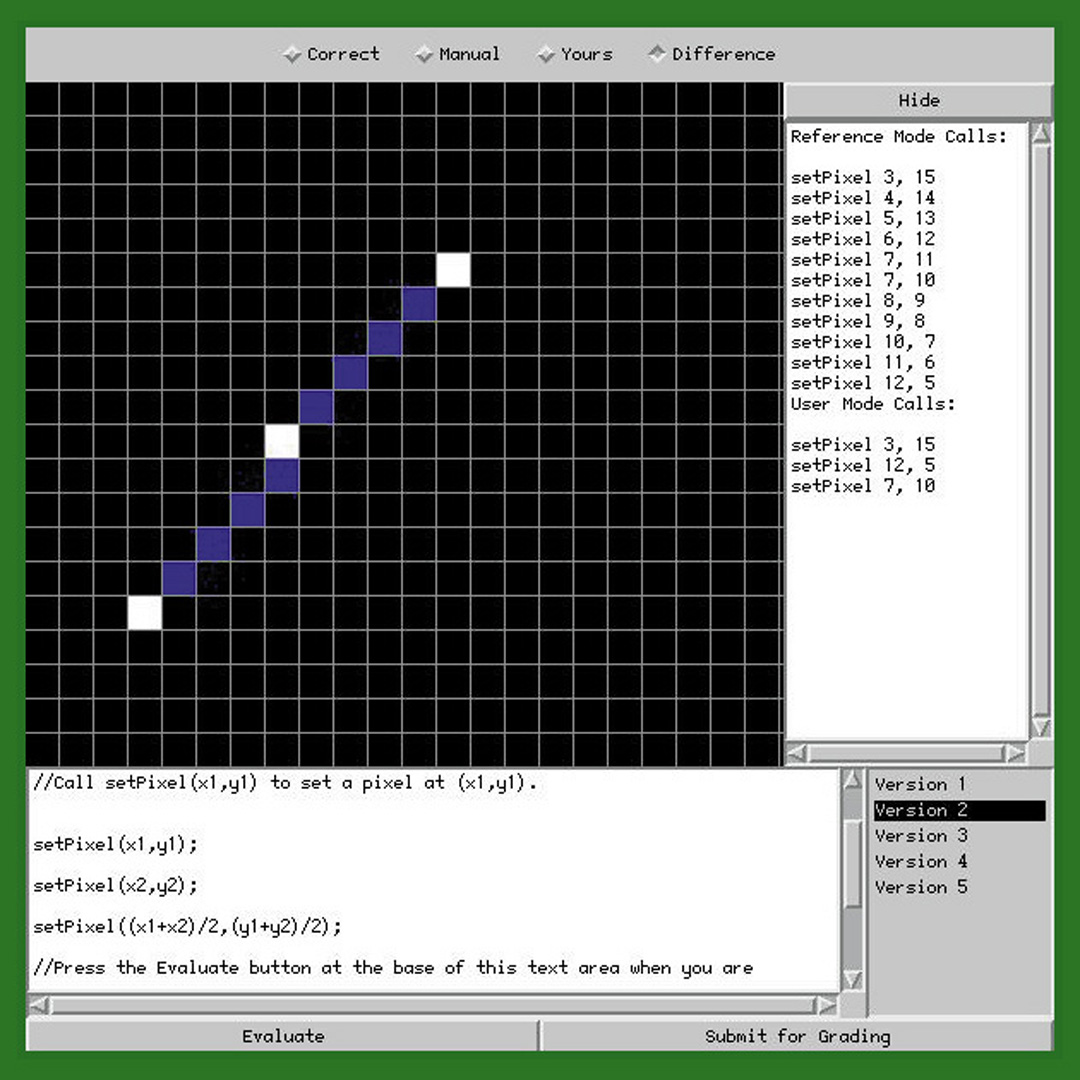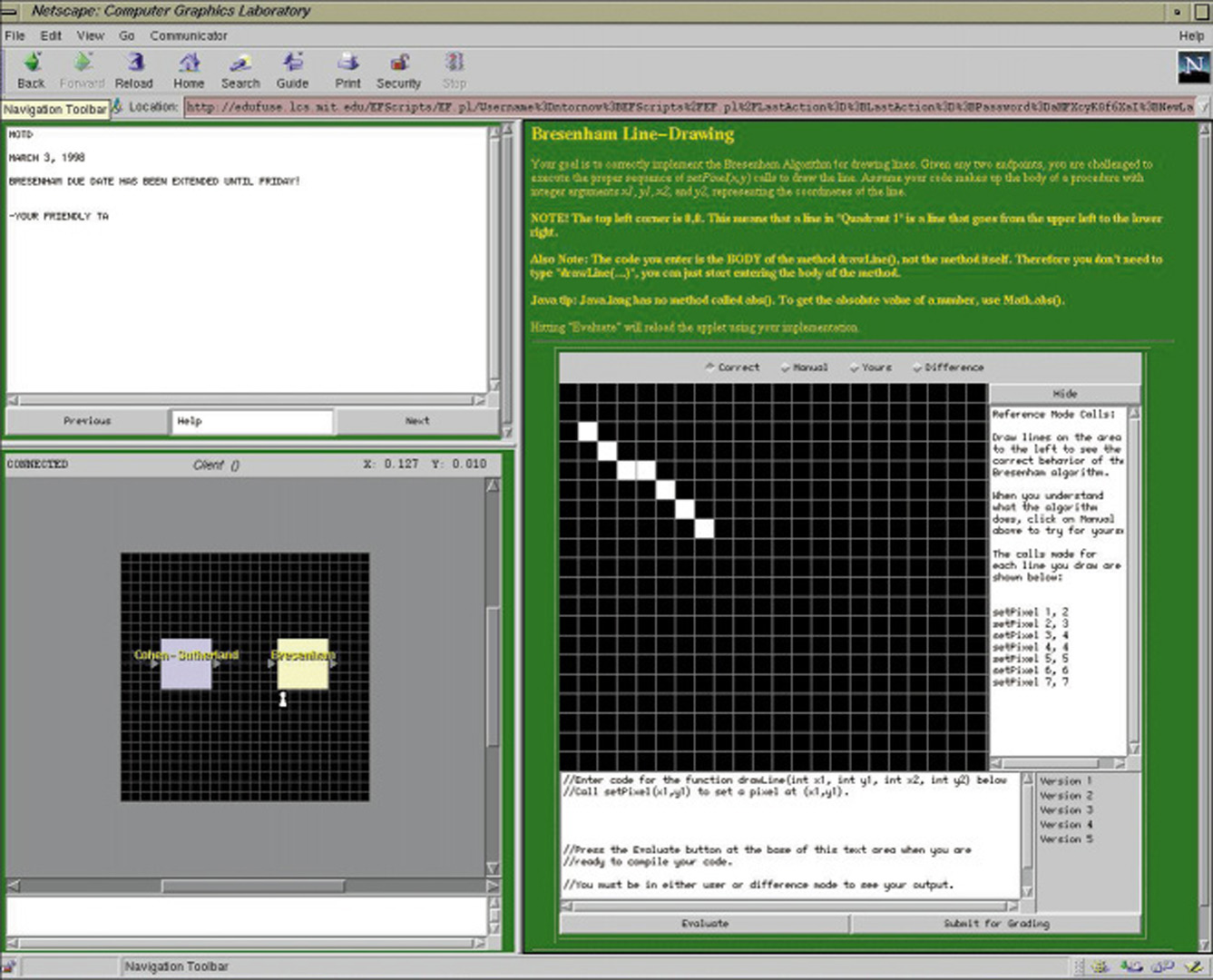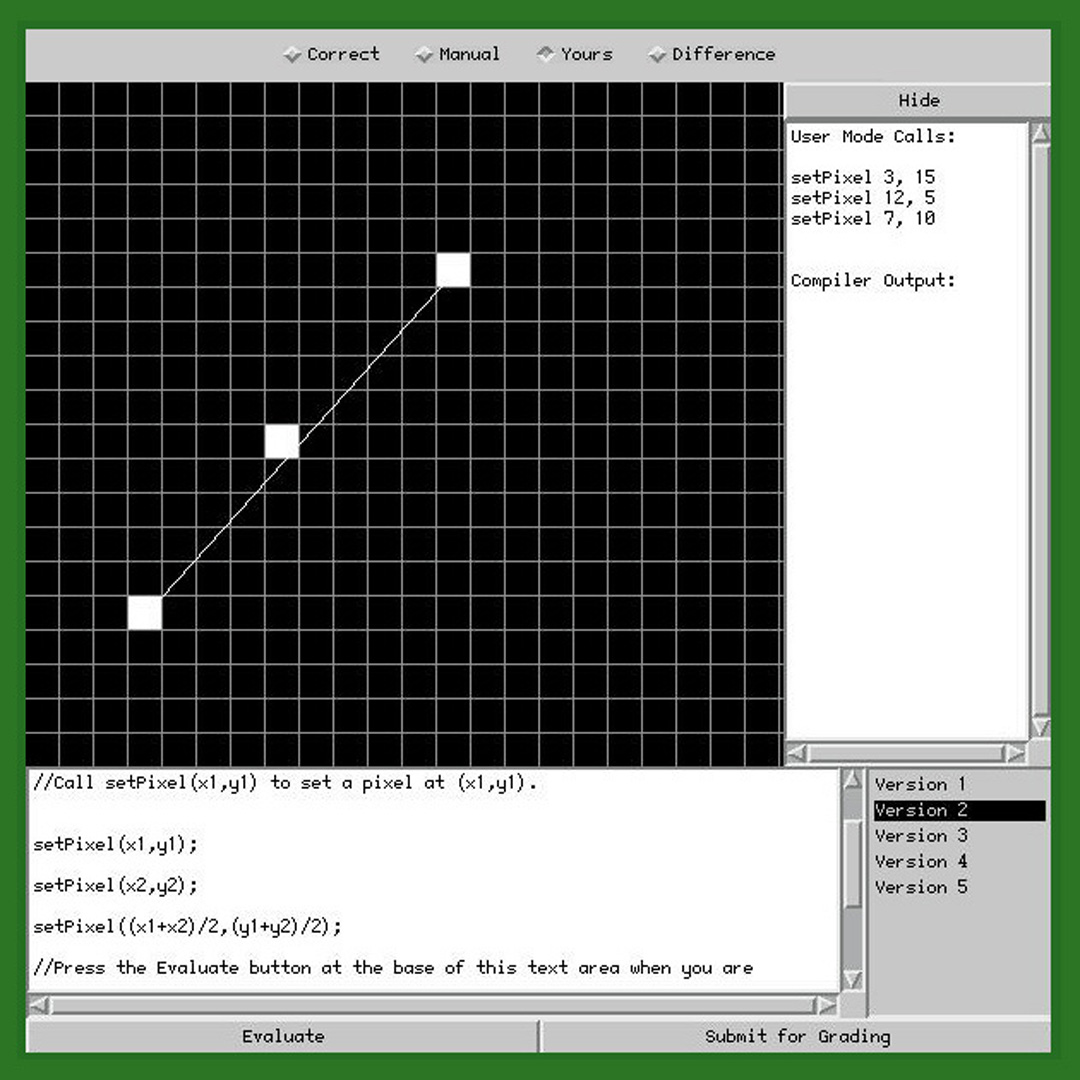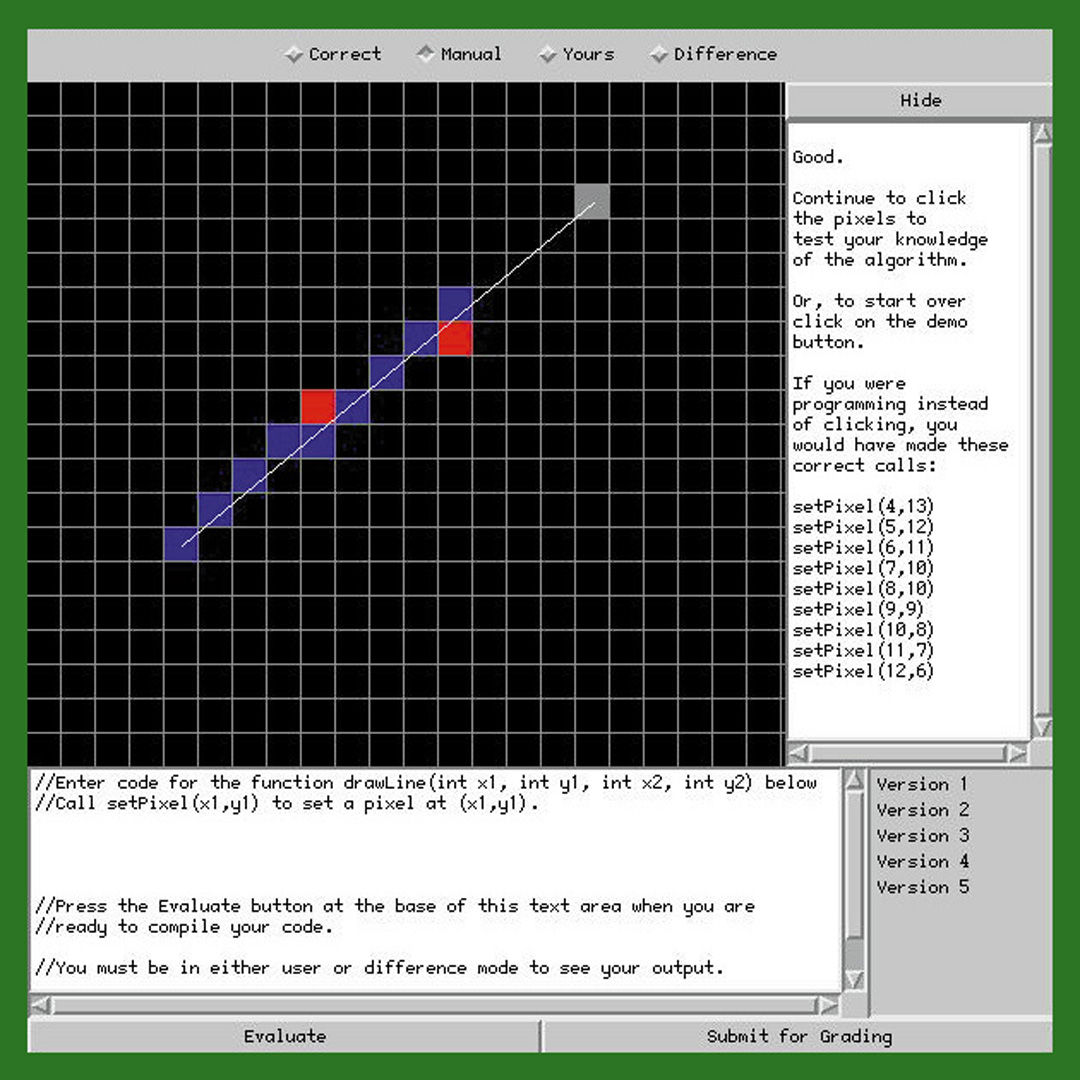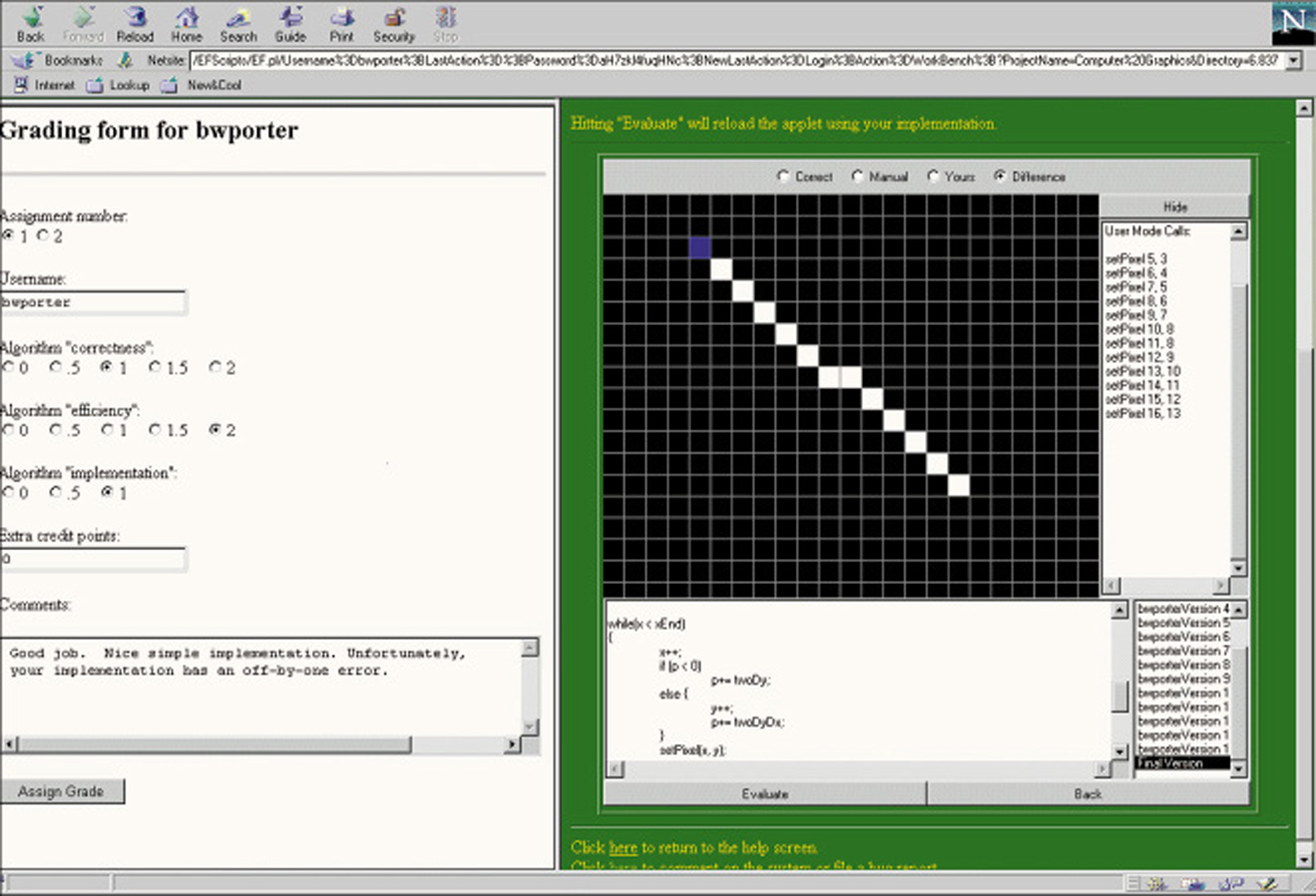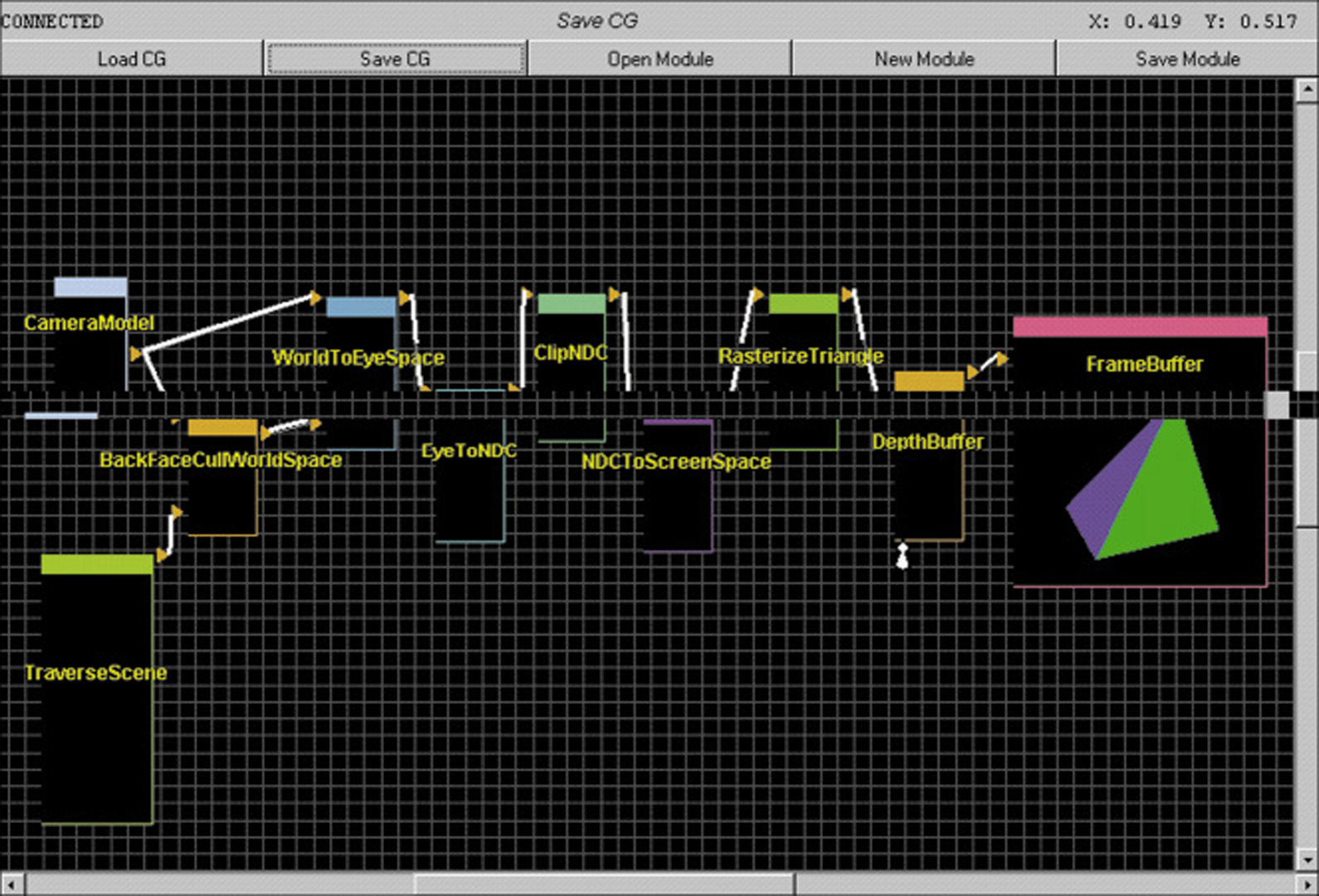“Distributed Development and Teaching of Algorithmic Concepts” by Teller, Boyd, Porter and Tornow
Conference:
Type(s):
Title:
- Distributed Development and Teaching of Algorithmic Concepts
Presenter(s)/Author(s):
Abstract:
We describe Fuse-N, a system for distributed, Web-based teaching of algorithmic concepts through experimentation, implementation, and automated test and verification. Fuse-N is accessible to, and usable by, anyone with a Java-enabled Web browser. The system was designed to:
1 Minimize the overhead required for students to engage in the essence of the learning experience.
2 Allow students to experiment with, generate, and evaluate algorithms and their implementations.
3 Facilitate greater, more effective interaction among students and between students and teaching staff.
The system represents algorithmic concepts as dynamic “modules” in Java. Students map inputs to outputs either via system-supplied “reference” implementations; manually, with corrective feedback; or by writing one or more alternative implementations for the concept. The output of the students’ implementation is programmatically and visually compared to that of the reference implementation. Modules can be interconnected in a dynamic dataflow architecture of arbitrary complexity. Teaching staff can monitor student progress online, answer questions, execute student implementations, and perform a variety of administrative tasks.
A prototype system supported two modules. We have since extended Fuse-N to include a classical polygon rasterization pipeline, a module authoring “wizard,” an editor, and several other components. We describe Fuse-N from student, staff, and developer perspectives. Next we describe its architecture and the technical issues inherent in its construction and extension. Finally, we report on some early experiences with the system.
Acknowledgements:
We gratefully acknowledge the past and present Fuse-N development team, including the authors: Bhuvana Kulkarni, Aaron Boyd, Randy Graebner, and Arjuna Wijeyekoon. The Fuse-N project has been supported by the MIT Class of 1951, the MIT Lab for Computer Science, the National Science Foundation (through Career Award IRI-9501937), Silicon Graphics, Inc., and Intel Corporation.

